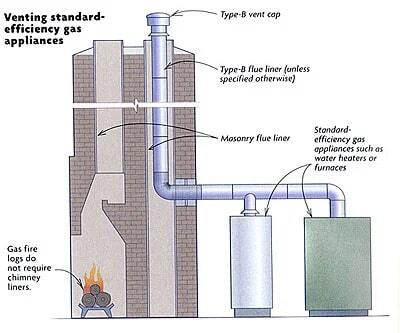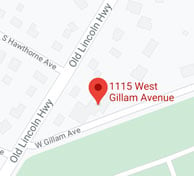Furnace flue or vent pipes play a pivotal role in maintaining both efficiency and safety of your heating system. These essential components are responsible for expelling combustion byproducts, ensuring the well-being of our living spaces. In this blog, we'll help you understand the role and importance of furnace flue and vent pipes.
What are Furnace Flue or Vent Pipes?
Furnace flue or vent pipes are channels designed to exhaust combustion gases produced by your heating system, such as a furnace or boiler, safely out of your home. These pipes play a vital role in maintaining indoor air quality by preventing harmful gases, like carbon monoxide, from accumulating inside. Carbon monoxide, a silent and deadly gas, cannot be detected by our senses as it is odorless and colorless. However, a properly functioning vent pipe acts as a safeguard against this invisible threat.
Vent pipes also play a significant role in optimizing the efficiency of your furnace. By effectively expelling exhaust gases, they enable your heating system to draw in the precise amount of fresh air needed for combustion. This delicate balance directly impacts the warmth of your home and your energy bills.

Components of flue or vent systems
Flue Pipe
The flue pipe is the primary conduit through which combustion gases exit the furnace. It is typically made of metal and must be constructed with materials capable of withstanding high temperatures. The diameter of the flue pipe is crucial, as it affects the efficiency of gas expulsion.
Vent Connector
The vent connector links the furnace to the flue pipe. It is essential to ensure a secure connection to prevent leaks of combustion gases into your home. The vent connector may also have a slope to facilitate the smooth flow of exhaust gases.
Chimney or Vent Stack
In some heating systems, a chimney or vent stack serves as the final pathway for combustion gases to exit the home. These structures are designed to extend above the roofline, promoting proper drafting and preventing backdrafts.
Types of Furnace Flue Systems
Natural draft systems
Natural draft systems rely on the buoyancy of hot gases to create an upward flow through the flue. These systems are simple and cost-effective but may be influenced by external factors like wind.
Mechanical draft systems
Mechanical draft systems use fans or blowers to assist in the removal of combustion gases. These systems provide more control over the direction and speed of exhaust, making them suitable for a wider range of conditions.
Causes of Vent Failure
Vent pipe failures can occur for various reasons. Over time, natural wear and tear becomes a common cause as the constant exposure to high temperatures and corrosive gases gradually deteriorate the pipes. The significant issues of corrosion and rusting are particularly prevalent in older systems or environments with high humidity or corrosive atmospheres.
In addition, vent pipes can suffer damage externally from harsh weather conditions such as heavy snow, ice, or severe storms. This external damage can lead to blockages or leaks, further compromising the functionality of the vent pipes. Furthermore, improper installation or inadequate maintenance can contribute to premature failures. For instance, an incorrectly sized vent pipe for the furnace or improper alignment can result in inefficient operation and potential safety hazards.
It is essential to be able to identify the signs of a faulty vent pipe in order to take prompt action. Look out for visible indications such as rusting, corrosion, or physical damage to the pipe. Additionally, strange noises like rattling or buzzing could signify loose or damaged components. If you detect unusual smells or notice increased humidity around the furnace or vent areas, this could indicate a leak or blockage in the vent pipe.
Maintenance and Safety Tips
Regular inspections
Schedule regular inspections by a qualified HVAC professional to check for any signs of corrosion, blockages, or damage to the flue or vent pipes.
Clearance requirements
Ensure that there is adequate clearance around the flue pipes to prevent the risk of fire. Keep the area free from combustible materials.
Proper installation
Flue pipes must be installed according to manufacturer specifications and local building codes. Improper installation can lead to safety hazards and reduced system efficiency.
Carbon monoxide detectors
Install carbon monoxide detectors near sleeping areas to provide an early warning in the case of any gas leaks.
Conclusion
Understanding furnace flue or vent pipes is crucial for maintaining a safe and efficient heating system. By familiarizing yourself with the components and types of flue systems, you empower yourself to make informed decisions about installation, maintenance, and troubleshooting.
If you live in the Delaware Valley/Greater Philadelphia area and would like to find comfort within your home, visit our website or give us a call at 215 - 245 - 3200 to learn more.




